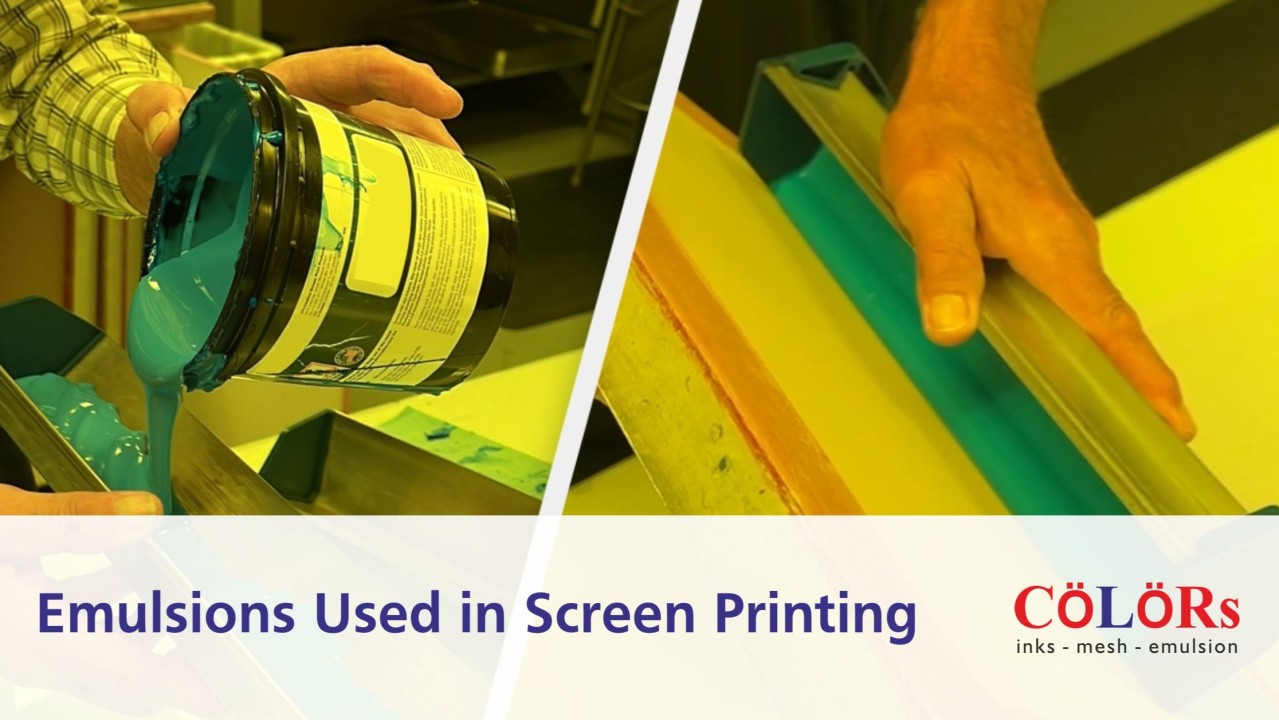In screen printing, emulsion plays a critical role in the process. It is used to transfer the artwork onto the screen. Upon exposure to UV light, the emulsion hardens in the non-image areas, creating a durable stencil. Meanwhile, the unexposed sections remain soluble and are washed away, leaving behind the design for printing. Screen printing emulsions emerged in the early 20th century, with the photostencil process introduced in the 1930s, enabling precise stencil creation. Early emulsions used bichromates with gelatin but evolved into safer, more efficient types like diazo and SBQ photopolymers, offering faster exposure and superior print quality. Selecting the correct emulsion is essential for durability, ink compatibility, and achieving high-quality prints.
Here’s an overview of the primary emulsion types used in screen printing:

Ammonium Bichromate Emulsions
Description: Made with ammonium bichromate, these emulsions are economical but classified as hazardous. They provide moderate resolution and are less suited for intricate designs.
Key Properties: Low cost, average detail resolution, recommended with 35–45% solid content.
Limitations: Due to health and environmental concerns, these emulsions are generally avoided today.
Diazo (diazonium salts) Emulsions
Description: A two-part emulsion that requires a separate sensitizer, diazo emulsions have a reasonable exposure time and provide sharp detail, making them suitable for fine prints. These emulsions also come in single-pot formats.
Key Properties: Moderate cost, good for high-detail prints, fast exposure time, and shelf life of 30–45 days.
Application: Commonly used in textile printing and applications needing detail accuracy.
Dual Cure Emulsions
Description: A combination of diazo and SBQ photopolymer emulsions, dual cure emulsions provide high exposure latitude and reclaiming ease. They are resilient against minor exposure variances.
Key Properties: Fast exposure time, long shelf life, tolerance to over- or under-exposure, ideal for diverse printing conditions.
Application: Widely used for mixed printing needs where exposure control may vary, including textile, graphic, and industrial screen printing.
SBQ (Styryl-based Quinoline) Emulsions
Description: SBQ (Pure Photopolymer) emulsions are pre-sensitized and highly responsive to UV light, resulting in the fastest exposure times and excellent mesh binding. They are known for high-quality results and long shelf life.
Key Properties: Fastest exposure, outstanding mesh adhesion, shelf life up to one year, high cost.
Application: Ideal for high-volume production, detailed prints, and jobs requiring precision, especially in graphic and industrial printing.
WR (Water-Resistant) Emulsions
Description: Specifically formulated for water-based inks, WR emulsions resist swelling and ink bleed, preserving image sharpness. They are often paired with water-resistant block outs.
Key Properties: High water resistance, essential for water-based garment and textile inks.
Application: Primarily used in textile and garment printing with water-based inks.
Emulsion Selection Based on Ink Type
Solvent-Based Inks: Use solvent-resistant emulsions for long-lasting prints.
UV Inks and Coatings: Choose UV-resistant emulsions to withstand exposure to UV curing.
Water-Based Inks: Opt for water-resistant emulsions to prevent breakdown during printing.
Plastisol Inks: Require solvent-resistant emulsions for garment printing.
Each emulsion type offers unique benefits, from durability to exposure time, catering to different inks, substrates, and printing environments. Proper emulsion selection enhances print quality, adhesion, and efficiency in the screen-printing process.
Article by Dr. Mustafa Kapadia


